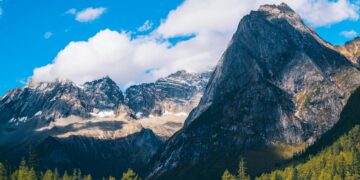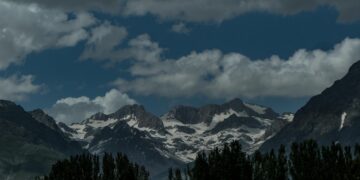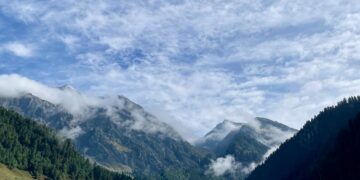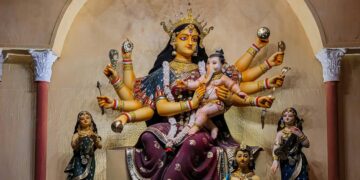Ladakh Tourism is not a trend. It’s a connection—to silence, wind, rough land, and kind-hearted people living high in the mountains. While many destinations are about entertainment, Ladakh is about experience. It’s not meant to be rushed or filtered. It’s one of the few places in India where everything—people, geography, and climate—demands respect.
From the brown mountains that glow orange at sunset to the icy rivers that host frozen treks, Ladakh brings a rawness that no other place can match. If you’re planning to know Ladakh, here’s what Ladakh Tourism truly holds—beyond Instagram photos and travel packages.
Roads That Lead to Ladakh
There are two main ways to reach Ladakh by road:
- Manali-Leh Highway
- Srinagar-Leh Highway
Each road has its own character. The Manali-Leh route tests your patience with sharp curves, mountain passes, and thin air. But that’s the beauty of it. The journey becomes as memorable as the destination. On the other side, the Srinagar route is greener and less tough but equally scenic.
For those flying in, Kushok Bakula Rimpochee Airport in Leh connects Ladakh to major cities like Delhi, Jammu, and Srinagar.
Pro Tip: Always keep an extra day to rest and get used to the altitude if you’re flying in.
Leh – The Quiet Capital
Leh is the face of Ladakh Tourism. This is where most travelers begin. It’s a small town with narrow roads, Tibetan-style buildings, cafes, and monasteries. The Leh Palace and Shanti Stupa are among the first places visitors check out—but what hits most people is the silence.
No loud traffic. No buzzing nightlife. Just wind, prayer flags, and local faces going about their life slowly.
Leh has become more tourist-friendly over the years. Internet is there (slow), hotels range from homestays to boutique stays, and food options include both Indian and Tibetan dishes.
Monasteries That Breathe Life
Ladakh is deeply spiritual, and monasteries are not just tourist sites—they are living, breathing parts of people’s daily life. Some of the key monasteries that keep Ladakh Tourism deeply rooted in culture include:
- Hemis Monastery – The largest monastery in Ladakh and home to the famous Hemis Festival.
- Thiksey Monastery – Known for its architecture and sunrise views.
- Diskit Monastery – With its towering Maitreya Buddha statue looking over Nubra Valley.
- Alchi Monastery – A thousand-year-old heritage site with beautiful wall paintings.
These monasteries aren’t just meant to be visited. Sit quietly. Watch a prayer ceremony. Notice how calm comes from repetition and rhythm.
The Valleys That Stay With You
1. Nubra Valley
To reach Nubra, you have to pass through Khardung La, once considered the highest motorable road in the world. The valley surprises everyone—cold desert on one side and green villages on the other. The double-humped Bactrian camels of Hunder are famous here.
2. Zanskar Valley
It’s not a quick trip. It’s far and disconnected—but that’s the point. The Zanskar range gives you some of the most untouched landscapes. Come here for treks, river rafting, or just to feel small under the wide Ladakhi sky.
3. Turtuk
A border village that only opened to tourists in 2010, Turtuk is unique. People here are of Balti origin, and the village looks and feels different. A few hours from Nubra, this place is proof of Ladakh’s diverse identity.
High-Altitude Lakes That Reflect the Sky
Ladakh Tourism is incomplete without its lakes. They don’t just sit quietly—they speak.
1. Pangong Tso
Yes, it’s been on every travel list and Bollywood screen, but it’s still worth it. The blue shades change every hour. It gets cold. There are no big restaurants. But that’s the charm.
2. Tso Moriri
Less popular, more peaceful. Tso Moriri feels untouched. You’ll mostly find wildlife photographers, solo bikers, and bird watchers here. The lake sits in the Changthang region, home to the nomadic Changpa people.
3. Tso Kar
A saltwater lake in a barren setting. Wild asses (Kiangs) and black-necked cranes are commonly seen here. A good spot for those who want to skip the crowd.
Culture and Local Life
People in Ladakh live in extremes. Winter is long and isolating. Roads shut down. Supplies stop. So people store food, build thick homes, and lean on each other.
Tourism is now a big part of the local economy. Many families run homestays, act as guides, or sell handmade woolen items. Ladakh Tourism has made sure that culture isn’t just protected—it’s lived. Festivals like Losar, Hemis, and Ladakh Festival show Ladakhi traditions with music, dance, and food.
If you’re serious about knowing Ladakh, stay in a homestay, learn a few words in Ladakhi, and eat what locals eat. Try Thukpa (noodle soup), Momos, and Skyu (a wheat-based stew).
Treks That Test You
Treks in Ladakh are not weekend trips. They’re raw, high-altitude, and often disconnected. Perfect for those who don’t mind roughing it out.
- Chadar Trek – Walking over the frozen Zanskar river in peak winter.
- Markha Valley Trek – A scenic route passing through villages and rivers.
- Stok Kangri – For those wanting to attempt a Himalayan summit (currently closed for conservation but worth mentioning).
- Sham Valley Trek – A beginner’s trek also known as the “baby trek.”
Trekkers must acclimatize properly. This is not just a suggestion—it’s safety advice.
Wildlife You Didn’t Expect
You don’t think of Ladakh and imagine animals. But Ladakh Tourism is now getting attention for its wildlife too.
- Snow Leopard – Hard to spot but Ladakh is a global destination for snow leopard tracking.
- Tibetan Wolf and Red Fox – Both live in the wild stretches of Changthang.
- Black-necked Crane – A sacred bird seen around Tso Moriri and Tso Kar.
- Kiang – The wild ass of Ladakh, spotted in open salt plains.
Much of this is due to the Hemis National Park, a protected area for Himalayan wildlife.
Responsible Tourism in Ladakh
Ladakh is fragile. Climate change, plastic waste, and over-tourism are starting to hurt it. Ladakh Tourism must not become about photos and checklists.
- Don’t leave plastic bottles. Use refillable water bottles.
- Choose homestays over big hotels. Money stays local.
- Don’t drive on off-road tracks. It damages the land.
- Respect monasteries—no loud talking or stepping into restricted areas.
- Dress modestly. You’re in someone else’s home.
Local groups are working hard to make tourism sustainable. Support them.
Best Time to Visit
- May to September – Most roads are open. Lakes are not frozen. Perfect for road trips, treks, and valley visits.
- January to February – Only for brave travelers. Ideal for snow leopard sightings and Chadar trek.
- March to April – Quiet, cold, and beautiful if you’re okay with fewer comforts.
Avoid visiting in late October to early December. It’s cold, roads begin to shut, and support is limited.
Final Words
Ladakh Tourism isn’t for checklist travelers. It’s for those who want to feel small in front of nature, to breathe slowly, to accept the mountain pace. The air is thin. The nights are quiet. The people are humble.
Come to Ladakh with patience, with respect, and with time. And Ladakh will give you something more than memories—it will change your sense of time, sound, and space.





















